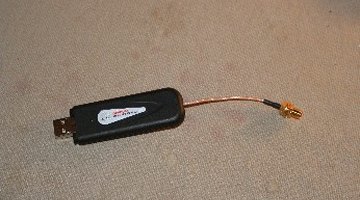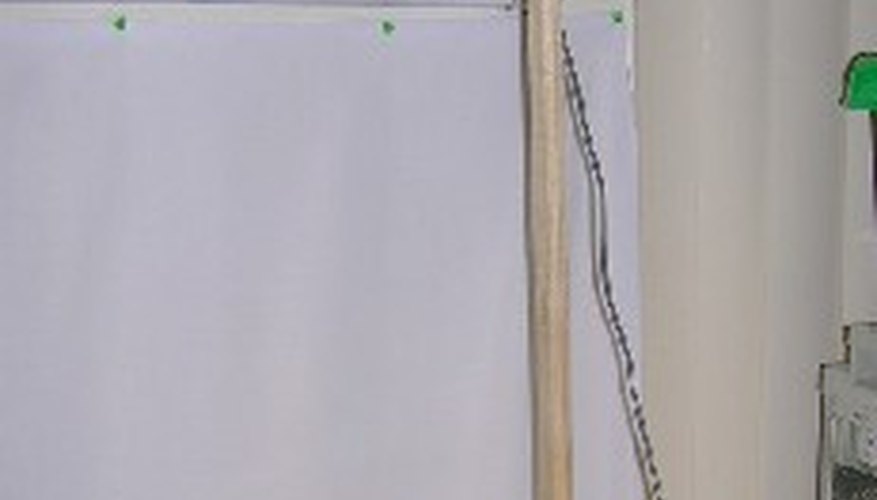Building a USB homemade wireless networking antenna involves the creation of an R-SMA adaptor, if necessary. USB devices normally have their own internal antennas, which must be modified for use with homemade equipment. The antenna itself can be a parabolic dish coupled with a standard wireless omnidirectional antenna node. The average networking technician can create a homemade USB Wi-Fi antenna in about an hour.
- Building a USB homemade wireless networking antenna involves the creation of an R-SMA adaptor, if necessary.
Create the USB to R-SMA adaptor by modifying a USB wireless-G network device. This small, thumb-sized adaptor is a complete network card that is plugged into the USB port on a laptop or computer. The only drawback is its internal, undersized antenna. Disassemble the plastic casing and locate the antenna leads. They should be fairly obvious, as they probably terminate into a small wrapped wire or a wire embedded into the casing.

Solder the leads from the internal antenna to an R-SMA antenna cable. The positive lead, which is connected to the internal wire inside the USB device, must be soldered to the outer shield wire on the R-SMA cable. The centre lead in the R-SMA cable is actually negative. Apply a generous amount of solder and secure the leads to the board of the device.
- Solder the leads from the internal antenna to an R-SMA antenna cable.
Create a suitable antenna from the parabolic dish by placing the standard antenna into the centre inside curve of the dish. This will direct a normally omnidirectional signal, and greatly increase the range. The antenna will have a male R-SMA jack on the bottom, or connected by a cable. Secure the antenna in place with adhesive. Place a mount on the backside of the dish, which can be as simple as an L-shaped bracket and screws.
Connect the antenna's R-SMA cable to the USB device's new female cable adaptor by screwing it in clockwise.
Connect the USB device to the laptop or computer and install any drivers necessary to enable it. This software is model-dependent, and should have come on a CD-ROM disk with the hardware.
Mount the parabolic dish in an area without obstructions, and test the signal with another device in the distance. The dish will have an effective angle of deflection of 30 degrees, and must be pointed directly at the second device for best performance.
TIP
Using high-gain antennas and wires will increase performance.
WARNING
Do not solder the antenna wires backwards.
